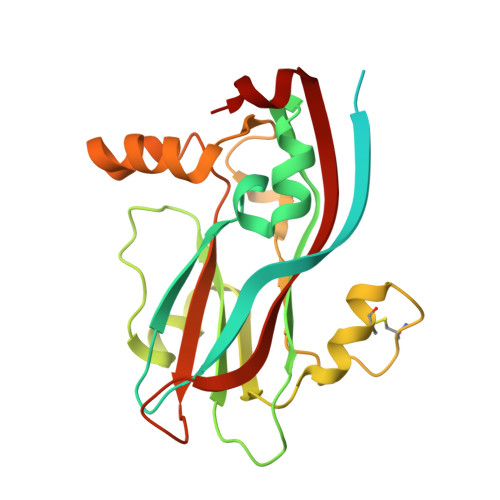Structure of Recombinant Capsids Formed by the Beta-Annulus Deletion Mutant-Rcp (Delta 48-59) of Sesbania Mosaic Virus
Anju, P., Subashchandrabose, C., Satheshkumar, P.S., Savithri, H.S., Murthy, M.R.N.(2008) Virology 375: 190
- PubMed: 18295296
- DOI: https://doi.org/10.1016/j.virol.2008.01.023
- Primary Citation of Related Structures:
2VQ0 - PubMed Abstract:
A unique feature of several T=3 icosahedral viruses is the presence of a structure called the beta-annulus formed by extensive hydrogen bonding between protein subunits related by icosahedral three-fold axis of symmetry. This unique structure has been suggested as a molecular switch that determines the T=3 capsid assembly. In order to examine the importance of the beta-annulus, a deletion mutant of Sesbania mosaic virus coat protein in which residues 48-59 involved in the formation of the beta-annulus were deleted retaining the rest of the residues in the amino terminal segment (rCP (Delta48-59)) was constructed. When expressed in Escherichia coli, the mutant protein assembled into virus like particles of sizes close to that of the wild type virus particles. The purified capsids were crystallized and their three dimensional structure was determined at 3.6 A resolution by X-ray crystallography. The mutant capsid structure closely resembled that of the native virus particles. However, surprisingly, the structure revealed that the assembly of the particles has proceeded without the formation of the beta-annulus. Therefore, the beta-annulus is not essential for T=3 capsid assembly as speculated earlier and may be formed as a consequence of the particle assembly. This is the first structural demonstration that the virus particle morphology with and without the beta-annulus could be closely similar.
Organizational Affiliation:
Molecular Biophysics Unit, Indian Institute of Science, Bangalore-560 012, India.















